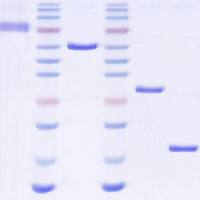The Use of Artificial MicroRNA Technology to Control Gene Expression in Arabidopsis thaliana
互联网
502
In plants, double-stranded RNA (dsRNA) is an effective trigger of RNA silencing, and several classes of endogenous small RNA (sRNA), processed from dsRNA substrates by DICER-like (DCL) endonucleases, are essential in controlling gene expression. One such sRNA class, the microRNAs (miRNAs) control the expression of closely related genes to regulate all aspects of plant development, including the determination of leaf shape, leaf polarity, flowering time, and floral identity. A single miRNA sRNA silencing signal is processed from a long precursor transcript of nonprotein-coding RNA, termed the primary miRNA (pri-miRNA). A region of the pri-miRNA is partially self-complementary allowing the transcript to fold back onto itself to form a stem–loop structure of imperfectly dsRNA. Artificial miRNA (amiRNA) technology uses endogenous pri-miRNAs, in which the miRNA and miRNundefined (passenger strand of the miRNA duplex) sequences have been replaced with corresponding amiRNA/amiRNundefined sequences that direct highly efficient RNA silencing of the targeted gene. Here, we describe the rules for amiRNA design, as well as outline the PCR and bacterial cloning procedures involved in the construction of an amiRNA plant expression vector to control target gene expression in Arabidopsis thaliana .








